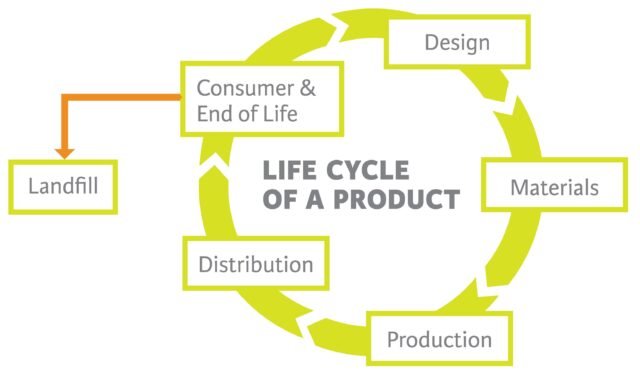Graphic design is a craft where professionals create visual content to communicate messages. By applying visual hierarchy and page layout techniques, designers use typography and pictures to meet user’s specific needs and focus on the logic of displaying elements in interactive designs to optimize the user experience.

Sustainable graphic design is the application of sustainability principles to graphic design. It considers the environmental impacts of graphic design throughout a life cycle that includes: raw material; transformation; manufacturing; transportation; use; and disposal.
As the graphic design industry contributes as a key visual communicator and marketing tool for different industries inside and outside the creative sector, its role to achieve sustainability becomes even more important.
The size, shape, colour, printing style and paper stock choices made by a designer will ultimately determine the size of the ecological footprint. By making informed decisions, designers can reduce their environmental impact, resulting in less greenhouse gas emissions and a more efficient use of natural resources.
Some tips for sustainable web and graphic design
There are a number of ways you can design graphics in a way that considers the environment.
1. USE LESS RESOURCES:
Less ink: By carefully choosing colours used (avoiding dark blues, dark purples and reds), as well as minimizing areas of solid in and number of inks used, each design job produces less toxic waste in the de-inking process.
Less energy: we can use printing presses running on energy from green suppliers. Using 100% post-consumer recycled paper as cutting down virgin forests accounts for 30% of global carbon emissions.
Less water: New paper production uses huge quantities of water, so use 100% post-consumer recycled paper, which reduces this water use by half.
Less pollution: use only vegetable based inks to avoid the toxic chemicals used to clean the printing press, and the toxic sludge caused by petroleum inks during the recycling process. low energy use minimizes greenhouse pollution.
Less waste: produce as little waste as possible. Recycled papers make use of milk cartons and other products that would otherwise go to landfill. Waste management systems can be placed, ensuring that items resulting from the print process — such as paper off-cuts, pallets, plastics, ink containers, cartridges, wipes etc. — are either recycled or re-used.
2. DESIGN:
do more with less: be innovative in downsizing — go for originality rather than size, whether it is a retro self-folding envelope or itty-bitty business cards
right size it: by optimizing rather than oversizing the job you reduce the demand for paper to be produced
fill the white space: by reducing the amount of white space in a document you can reduce the amount of paper needed to produce it
give it another chance: give your product a second chance at life so that it reduces the possibility of ending up in landfill.
don’t overdo the edges: by simply leaving a white border around your design you can reduce ink waste and allow for more paper to be recycled.
3. PAPER AND PRINTING
make it chlorine free: request paper that has been bleached using either Totally Chlorine Free bleaching (TCF) or Process Chlorine Free bleaching (PCF)
look for certification: There are several certifying bodies that provide a tick of approval for paper stock from environmentally friendly sources
make it thinner: it does not have to be on thick heavy-duty card, so use thinner sheets.
don’t print at all: go digital and use an alternative to printing where possible as this will drastically reduce the environmental impacts of your product
When achieving this some challenges might arise, like:
· lack of sustainability education
· sustainability practice guidelines
· improper disposal of waste chemicals
· air pollution
· lack of eco-papers and inks
· poor gate-keeping of design content
· weak collaboration among designers
· poor printing and weak design caused economic deficits
· some products designed for use were harmful to society
To minimize these challenges, we propose sustainability education for graphic designers, their production team, and clients. We further recommend that graphic designers should observe professional ethics in their graphic design practices to promote sustainability.

